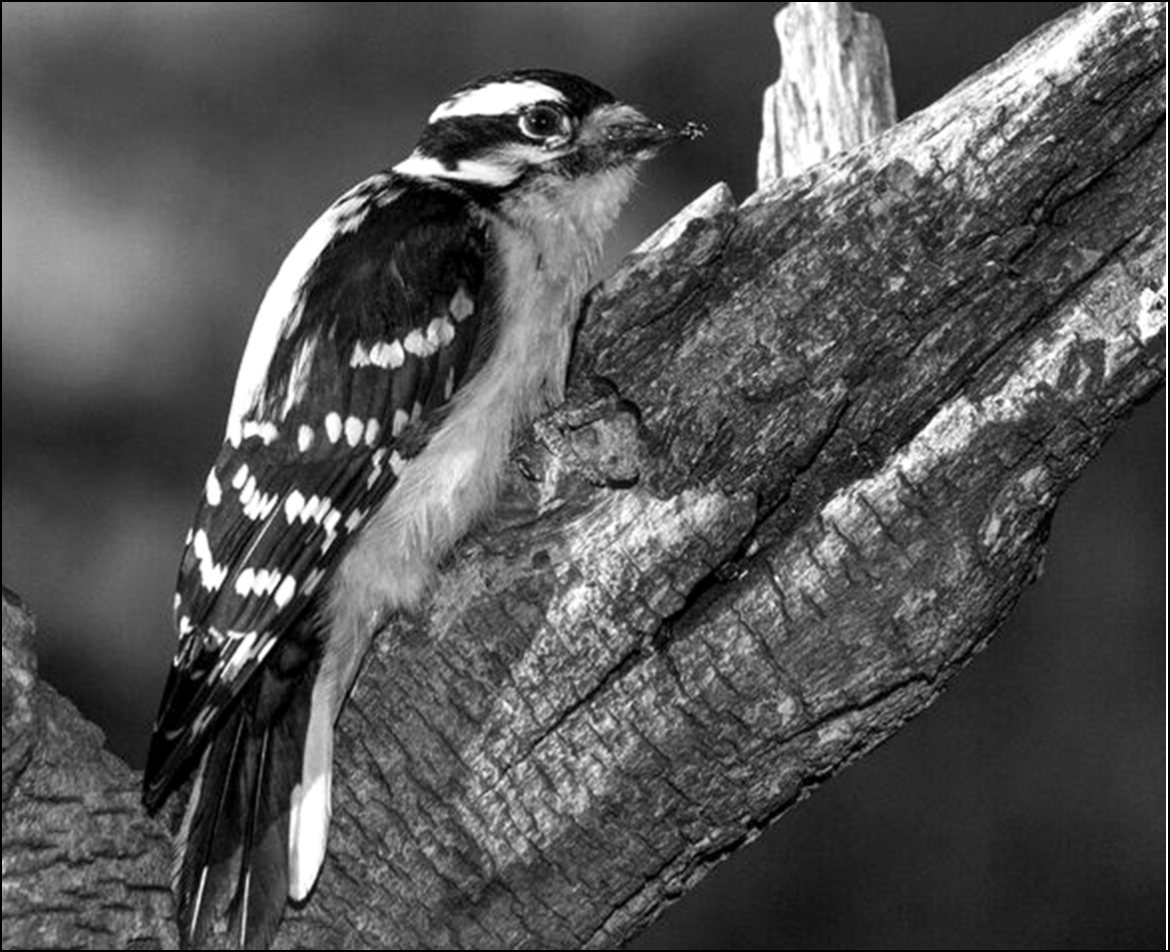
Photo by Ron Kirschbaum
Downy Woodpecker
It’s the most wonderful time of year. My synapses are firing overtime, not at the prospect of gifts to be bought and fruitcakes to be baked. They are firing at the regular sightings out my window of our smallest woodpecker, the Downy. Now he may not be as glamorous as the Pileated and Red-bellied who tower over him and possess much more dramatic plumage. Just the same, I love our humble Downy and find my face pressed up to the window admiring him as he visits my feeder. I suspect just about everyone else in town is doing the same.
This petite black and white bird can be admired with all his shenanigans as he climbs up and down our trees in search of food. Downies eat insects, berries, seeds and suet, which many of us put out at our feeders. Like cartoon characters, they hang onto trees, boring into the bark in search of insects. Downies have many adaptations which make them especially suited to life as a woodpecker. Four toes on each foot help them to hang on to bark when they are upside down. Because woodpeckers like to peck on trees (or telephone poles or houses), the orientation of their brains within their skulls is set up to minimize injury, and the brain occupies a small space so it does not jostle around when the call to peck cannot be resisted. Furthermore, the woodpecker has a multilayered beak to absorb stress from all that hammering on hard surfaces. And, in order to catch ants, the tongue is coated with mucus, a feeling many of us remember, not so fondly, from our college days. In the spring, Downies seek out tree cavities in which to nest. Once they have found the perfect location in some dead tree, they lay two to five eggs. These will hatch into adorable woodpeckers, ready to take flight in about a month. Like all woodpeckers, the Downy’s distinctive undulating flight suits his arboreal lifestyle and adds some panache to the art of flight.
Maybe the real attraction of the Downy for me is the memories he triggers. When I was a child growing up on Main Street, my parents gave me a long leash. I’d set off on my trike to visit the Smith sisters, who lived next to the Country Club. They acted glad to see me and I sure learned a lot within those walls. They were birders before it became chic, and taught me a lot about the local flocks. They’d often be making suet cakes and I could smell the bacon fat, the key ingredient in their suet, burbling on the stove as I walked in the door. Dot would point out the differences among the birds, and I’d spend an hour or so bouncing on their love seat and wrapping myself, mummy style, in their crocheted afghans before heading on my way. But I learned more than just about birds from these ladies. I learned about far away places from their stories and their stash of maps collected by their dad, Jesse Fowler Smith, who had been a missionary. I learned about the dynamics of sisterhood as I watched them operate in tandem. Their bond was magnified, as Eleanor was severely handicapped, adding layers to the attachment. Right then and there I yearned for the sister that I never had. At Dot and Eleanor’s side, I was able to learn about differences, acceptance and kindness. The birds at the feeder were just a by-product that drew me in. I wish I could thank the Smith sisters today, but for now I’ll look to the Downy and remember two gentle souls who have taken flight.